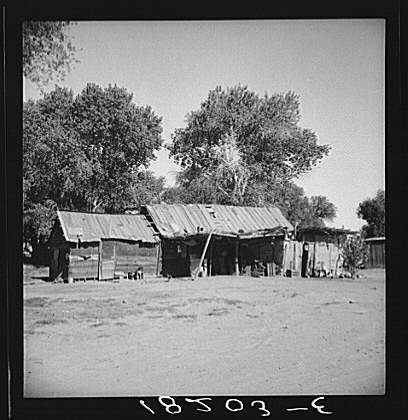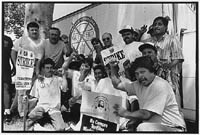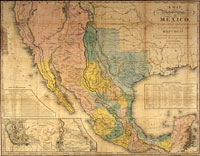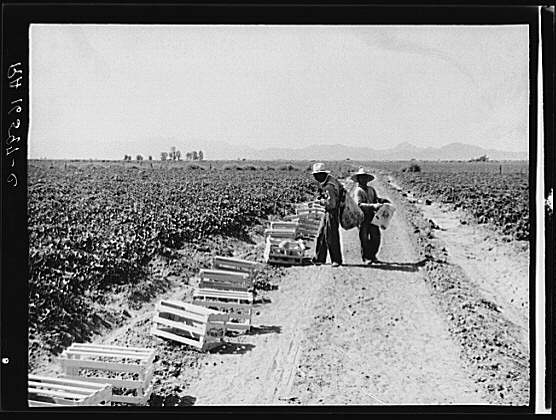
UT’s First-Year Forum text for 2007–2008 will be Luis Alberto Urrea’s The Devil’s Highway. Yesterday I sat in on a seminar hosted by the DRW where Domino Perez discussed some of the background and context of the issues that the book engages.
One theme of the discussion was the influence of film on the Urrea’s prose, as well as how images of Latinos can both support and trouble Urrea’s arguments. In the wake of that discussion, I thought I would post links to some Latin-American and Border Studies visual resources for use by DRW instructors and anyone else who is teaching a class that deals with these fields.
 • Center for Latin American Studies University of California, Berkeley: This site has links to the Center’s art gallery which features virtual galleries and slideshows of exhibitions. Of particular interest to DRW instructors is David Bacon’s “Trabajadores Immigrantes/Immigrant Workers.” Beatriz Manz’s site for the Fall 2007 course “The Southern Border” also has links to border-realted art and photography and maps, charts, and timelines.
• Center for Latin American Studies University of California, Berkeley: This site has links to the Center’s art gallery which features virtual galleries and slideshows of exhibitions. Of particular interest to DRW instructors is David Bacon’s “Trabajadores Immigrantes/Immigrant Workers.” Beatriz Manz’s site for the Fall 2007 course “The Southern Border” also has links to border-realted art and photography and maps, charts, and timelines.
 • Center for Latin American Studies, The University of Arizona: Jack Mount’s “Maps of the Pimería: Early Cartography of the Southwest” contains maps of the Pimería section of Spanish colonial Mexico which is located in what is now Arizona.
• Center for Latin American Studies, The University of Arizona: Jack Mount’s “Maps of the Pimería: Early Cartography of the Southwest” contains maps of the Pimería section of Spanish colonial Mexico which is located in what is now Arizona.
 • America from the Great Depression to World War II: Photographs from the FSA-OWI, 1935–1945, The Library of Congress, American Memory Project: This collection of photographs can be searched for relevant images. Some potentially helpful searches are “border,” “labor,” and “farm.”
• America from the Great Depression to World War II: Photographs from the FSA-OWI, 1935–1945, The Library of Congress, American Memory Project: This collection of photographs can be searched for relevant images. Some potentially helpful searches are “border,” “labor,” and “farm.”
• “Border Icons”: Border Studies Curriculum, The Center for Latin American and Border Studies, New Mexico State University: Although it contains no images, this lesson plan discusses border icons and provides class activities that could be adapted for use in a college classroom.
• Border Studies, Humanities-Interactive: This collection of multimedia essays documents the changes to the border between Mexico and the U.S.
• Blogging Pedagogy: Jim Brown has created a map of one of his personal borders using Google’s MyMaps tool. A discussion of how this tool can be used in teaching border studies can be found at Blogging Pedagogy.
Update: Bill Nericcio’s Tex[t]-Mex Galleryblog® “devotes itself to the aggressive, relentless, and, at times, pathological interrogation of Mexican, Latina/o, Chicana/o, “Hispanic,” Mexican-American, and Latin American stereotypes. It is either the online supplement to or the bastard sister of” his 2007 book Tex[t]-Mex: Seductive Hallucinations of the “Mexican” in America. (via Noël)
I’m sure this list is far from complete; please add to it by posting links any other relevant sites in the comments section.
Recent comments
2 years 29 weeks ago
2 years 44 weeks ago
2 years 44 weeks ago
2 years 50 weeks ago
3 years 4 weeks ago
3 years 4 weeks ago
3 years 4 weeks ago
3 years 6 weeks ago
3 years 6 weeks ago
3 years 6 weeks ago